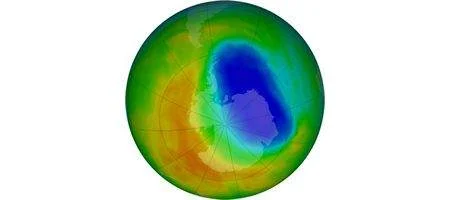The hole in the ozone layer over the Antarctic was the second smallest in the last two decades, data from NASA and the National Oceanic and Atmospheric Administration (NOAA) satellites shows.

This year also showed an improvement in the concentration of ozone in the region, with the minimum level recorded hitting its second highest level in twenty years.
However, the reason appears to be a change to warmer temperatures in the Antarctic lower stratosphere, and experts warn that the improvement may not last.
“The ozone hole mainly is caused by chlorine from human-produced chemicals, and these chlorine levels are still sizable in the Antarctic stratosphere,” says NASA atmospheric scientist Paul Newman.
“Natural fluctuations in weather patterns resulted in warmer stratospheric temperatures this year. These temperatures led to a smaller ozone hole.”
The ozone hole hit its maximum size on September 22, covering 8.2 million square miles – as big as the United States, Canada and Mexico combined. The average figure for the year was 6.9 million square miles, comparing very favorably with the largest hole ever recorded, on September 6, 2000, at 11.5 million square miles.
The hole started making its appearance in the early 1980s. Things have been improving since the discontinuation of chlorofluorocarbons, or CFCs, in the late 1980s, but experts warn it could take until about 2065 for ozone levels to reach their 1980s levels again.
The data was gathered by an ozone-monitoring instrument on the Suomi National Polar-orbiting Partnership (NPP) satellite. But a new system’s planned: a set of next-generation polar-orbiting environmental satellites called the Joint Polar Satellite System, which will extend ozone monitoring into the 2030s.






